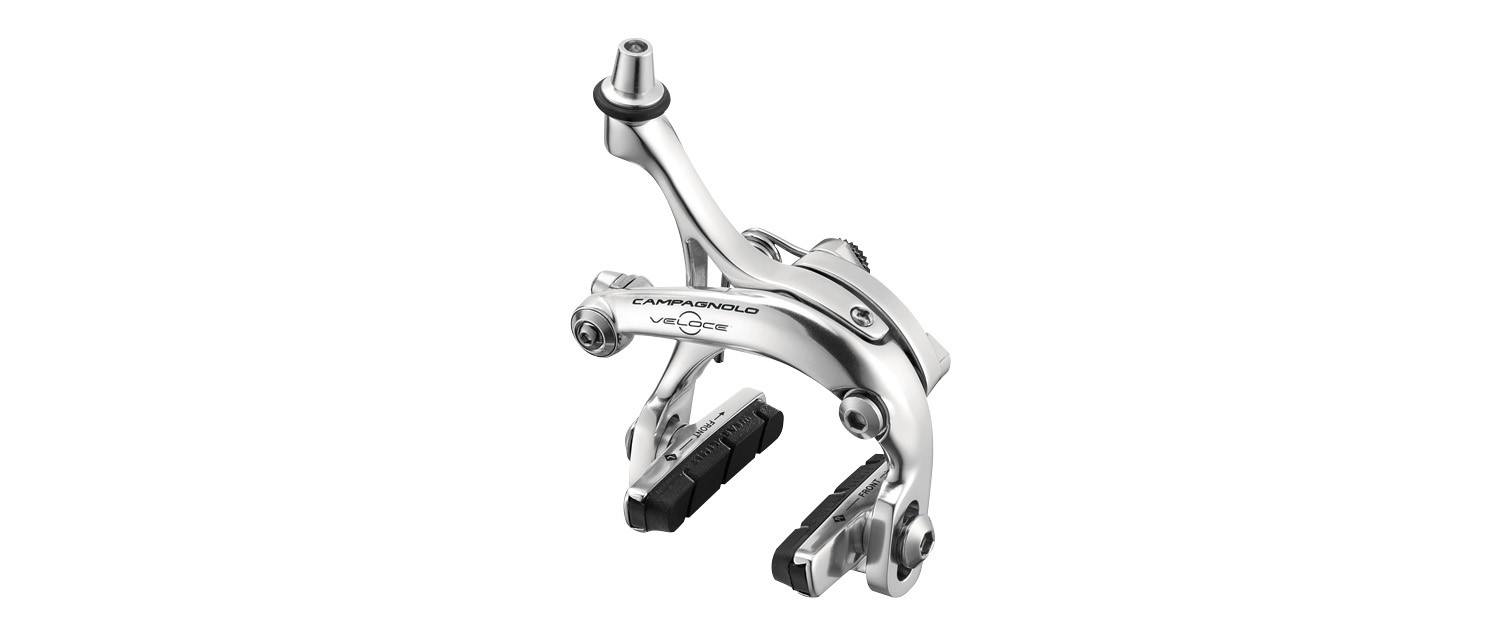Campagnolo Veloce groupset review
The entry level groupset from one of the oldest names in the business, but Campagnolo Veloce does a lot more than just trade on past glories

Veloce might not offer all the refinements and exotic ingredients you’d normally find on Campagnolo products, but don’t let that put you off. In simple usability terms it can mount a very strong challenge against its closest rival groupsets from Shimano and SRAM. It works well, it looks great, it’s surprisingly good value considering it’s a European-made product, and even at this end of the market the Campagnolo name still conjures a little magic.
-
+
Beautifully constructed
-
+
Very impressive operation
-
+
Excellent value for money
-
+
Campagnolo quality
-
-
No skeletal brakes or carbon highlights
-
-
Only a compact chainset
-
-
No 11-speed
You can trust Cycling Weekly.
Compared to the omnipresent Shimano groupsets, finding any Campagnolo components fitted to a mainstream road bicycle is something of a novelty. And if you do find it attached to an off-the-shelf bike, chances are that bike will be from an Italian brand.
There are a number of reasons why this situation has developed. Shimano’s quality and reputation is of course one. But, more practically, it’s because the vast majority of modern bikes are manufactured and built in the Far East. It costs a lot less and makes a lot more sense to use Shimano components — which are made on the bike factories’ doorsteps — than to bring Italian kit halfway around the world, only to send it back to Europe once it’s been attached to a bicycle.
The result for the consumer and Campagnolo is mixed. The relative scarcity of Campagnolo-shod bikes in a way helps to reinforce the almost artisan aura surrounding the company’s products. But it also means that, compared to Shimano, Campagnolo users are far fewer in number, and tend to be more experienced riders. However, none of this is necessarily a reflection on the performance or even the price of Campagnolo equipment itself, least of all in the case of Veloce.
Tale of the tape
Veloce is Campagnolo’s less expensive groupset and in relative terms, if you were to buy a Veloce groupset on its own, it’s only a little more expensive than Shimano Tiagra, and almost £100 less than SRAM Apex. When it comes to complete bikes, you can expect to see it on anything from sub-£1,000 machines to relatively exotic carbon wonders approaching £2,000.
Not surprisingly, considering Campagnolo's reputation for producing very pretty products, it doesn’t actually look out of place on higher-end bikes. That said, unlike Campagnolo’s higher-end groupsets, which tend to go big on carbon components, Veloce doesn’t have even a hint of composite parts, although almost everything else lives up to Campagnolo standards. The rear derailleur is a beautifully sculpted bit of kit; the chainset’s appearance is classically simple; and the integrated Ergopower levers use Campagnolo’s typical PowerShift mechanism, where a thumb button clicks the chain down, while an inward sweep of a paddle behind the brake lever pushes the chain up.

I said almost everything lives to Campagnolo’s standards; there are a few slight disappointments. All Campagnolo’s superior groupsets feature the Italian brand’s very sexy skeletal brakes with their lightweight calliper arms. Veloce’s aluminium calipers are very nice, but they don’t employ such notable design. And Campagnolo was the first major component manufacturer to offer 11 sprockets at the rear. Now all but one of its groupsets are 11-speed — and it’s Veloce that misses out.

In gearing terms, at least at the back, Veloce keeps at least one eye on Campagnolo’s racing tradition and only offers a biggest possible sprocket of 29 teeth. That’s not terrible news on the last hard climb of a sportive, but it’s also not quite as easy to live with as the 32t options found on most Shimano and SRAM set-ups. Despite that relatively conservative approach, Veloce only comes with a compact chainset. A choice of a standard double would be nice for old-school racers on a budget.
The latest race content, interviews, features, reviews and expert buying guides, direct to your inbox!

Italian class
A lot of discourse about Campagnolo’s components tends to focus on the brand’s heritage and sympathy for aesthetic qualities, so it would be quite understandable for a new, modern rider to wonder if practical performance is overlooked. In operation, though, modern Campagnolo groupsets are far from being boutique nostalgia trips.
As a case in point, Veloce gears really do shift beautifully. Many riders appreciate the fact that Campagnolo utilises two distinct hand movements for gear changes — because of which muscle memory takes over particularly quickly when operating Campagnolo’s gear shift mechanism — and clicking the thumb button to drop into smaller cogs is a very satisfying, snappy experience. The general feel of the hoods is suitably pleasing, too. In your palm it all seems just a little more svelte — refined even — than Shimano or SRAM.
Slightly less impressive, the up-shift paddle feels a bit floppy in relation to regimented Shimano levers, although you soon get used to it. Compared to Shimano Tiagra, Veloce might be just a tad less enthusiastic to move to an easier gear when you ask it to change under load — ie, when you’re climbing — but it’s only a slight difference. Both front and rear derailleurs are otherwise very impressive considering the price, and their crisp changes actually add a small sense of sportiness to the rest of a bike’s performance.
Finally one small advantage of Campagnolo’s system is that the brake lever itself cannot pivot laterally. In truth, the fact that Shimano levers can move laterally is rarely an annoyance, but when your concentration is at its limits on very tricky descents, knowing the controls you have in a death grip are completely secure seems just a little more reassuring.